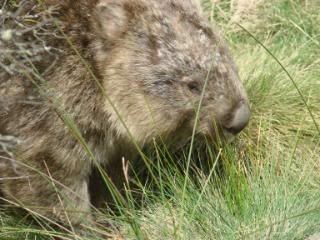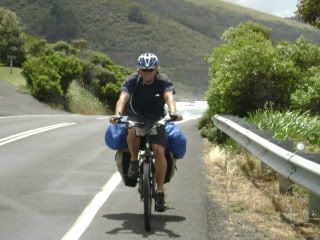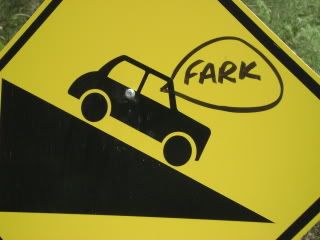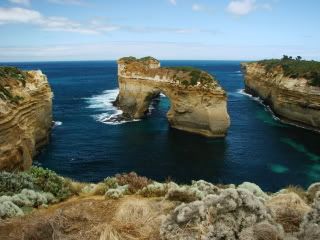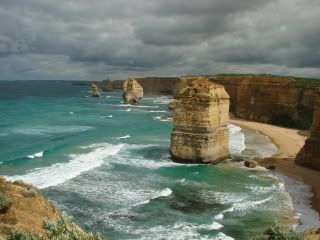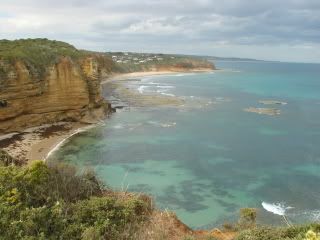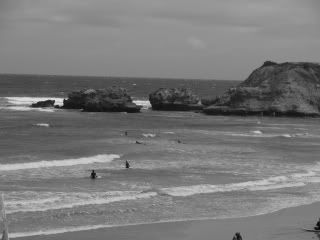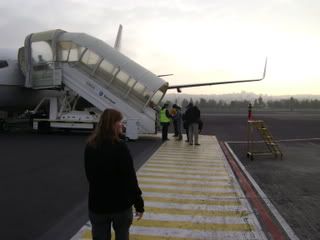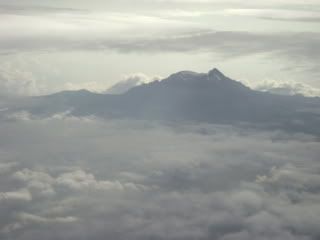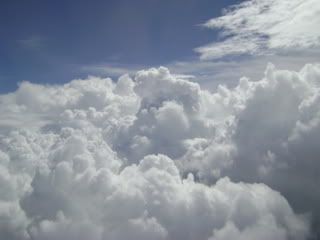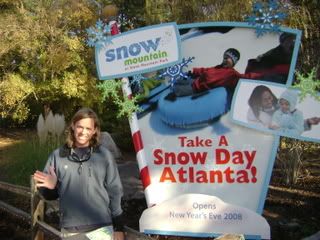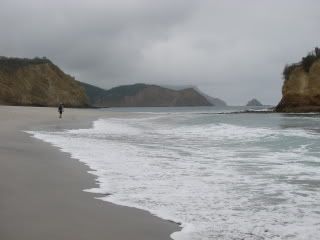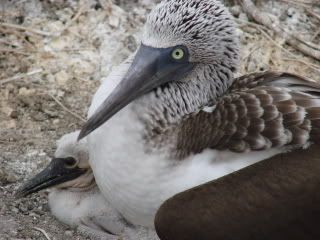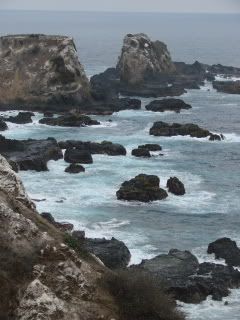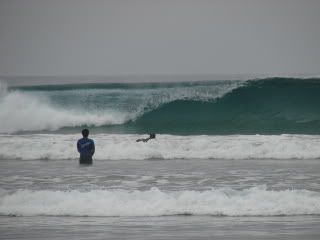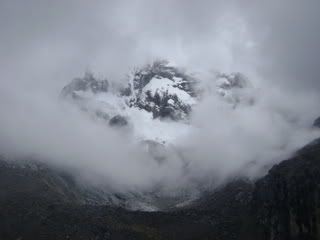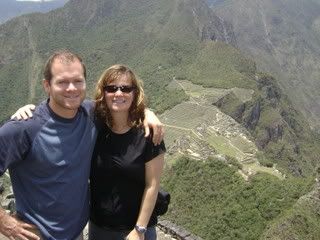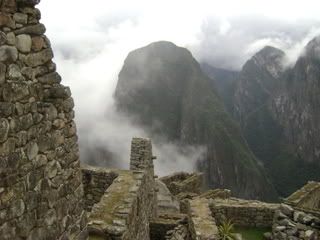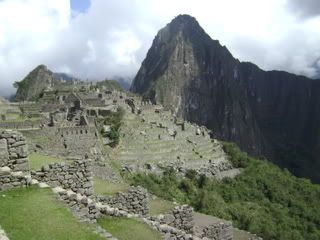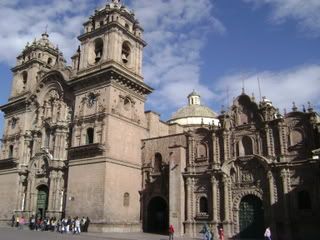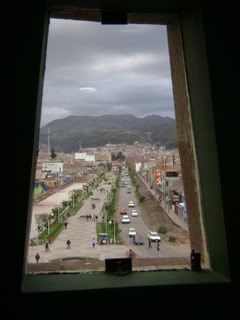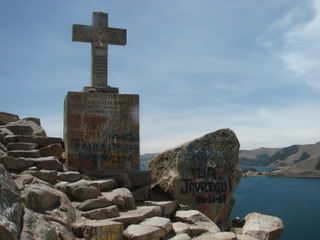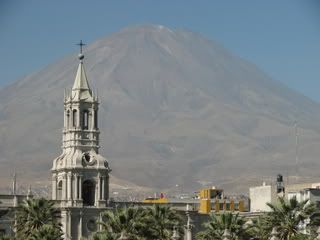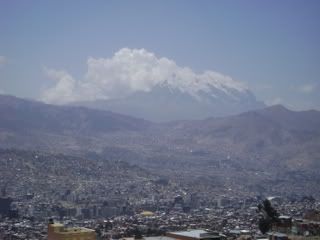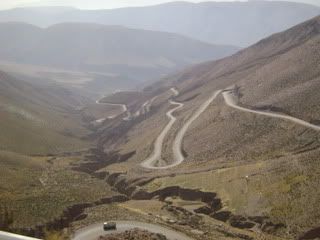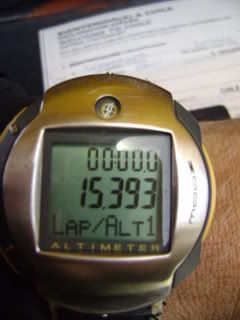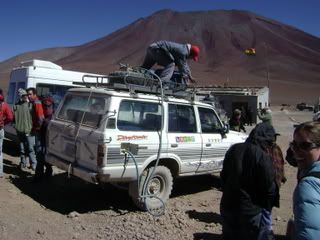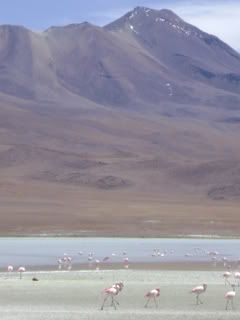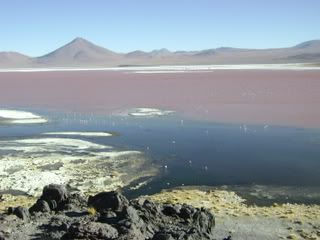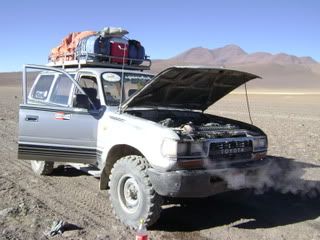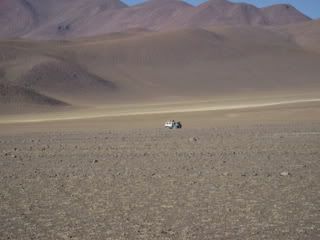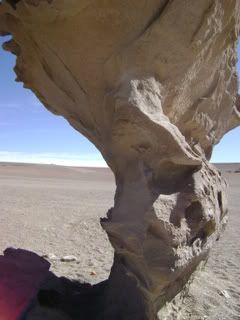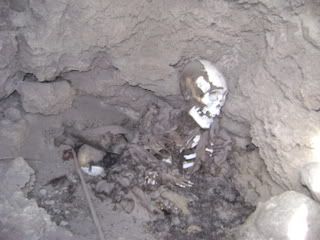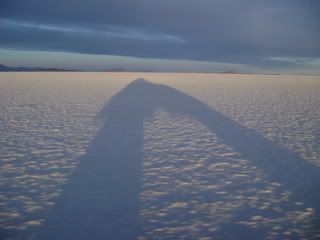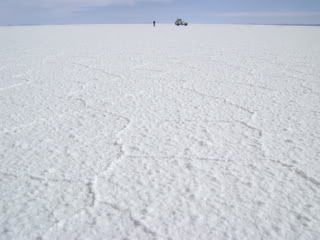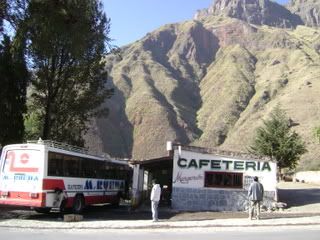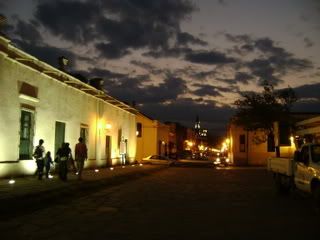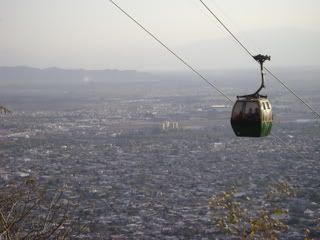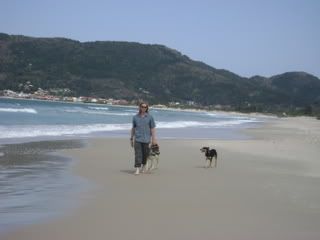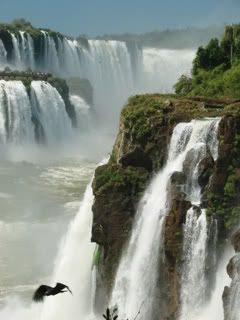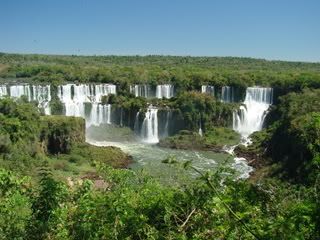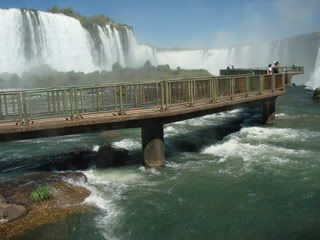DRUGS
It´s an inevitability that traveling in rough countries will involve bouts of sickness. Part of the problem is that in many poor countries health and sanitation are not particularly strong suits, but part of the blame also lays on the diets of Americans, who tend to eat foods made in factories, irradiated for your safety, and wrapped in airtight packages. True, you don´t get a lot of exposure to germs that way, but it also means your GI tract walks rather openeyed and innocently into the wolves of South American diets. Abandon hope, all ye who enter here.
Luckily for the traveler who may find himself spending days hugging a toilet, access to drugs here is supereasy and really pretty damn cheap. Case in point: A few years ago, when were were getting ready for six months of travel in Asia, a doctor gave us a script for six months of antimalarial medication. No problem, until we went to the pharmacy to fill our order: $900 for the lot. Per person. We held out and got the exact same drug from a pharmacy in Calcutta for less than a dollar. Total. Take that, Pfizer!
The traveler´s best friend here is flagyll, an antiobiotic which is the pharmaceutical equivalent of detonating an atom bomb in your intestines and us used to ward off that pesky GI ailment, giardiasis. The pills are so common the chemist does not even keep them stored on the racks behind the counter but instead in a box by the cash register. Two bucks for a halfdozen pills and in a matter of hours your on your way again.
While there have been plenty of times when I was fairly sure I was sick beyond recall, the worst ever was in Tanzania. I was on Zanzibar, an island in the Indian Ocean. I woke up one morning feeling pretty bad and stayed in bed. Three days later when I had not come out the hotel owner came in to see what was wrong. He took me in his pickup to a private doctor, who after some tests, said I had some sort of stomach deal. He gave me some meds and I was on my way. I felt better for a few hours and even went out to pizza but by the second slice it was like a hammer had come down on me. The restaurant owner got a cab and took me back to the hotel. The next few days were incessant trips to the toilet, unconsciousness and brief period of wakefulness when I noticed that the bedsheets were completely soaked. Oh, and my spleen was enlarged so it was sticking out of my abdomen and I was in extreme pain. This time the hotel owner simply took me to the airport. I gave him money and he came back with a ticket from Zanzibar to Mombasa, a decent sized city in Kenya. I was put in a wheelchair and when it came time to get on the plane to men came and hoisted me out of the chair, up the steps to the plane, and into the first seat. I had to change planes in Dar es Salaam, and no one knew what to do with me, partly because I could not talk. So someone wheeled me into what I think was a hangar and left me there. A while later some guards came by and asked me what I was doing there. I could not talk and there was slobber down my shirt. They came back with a sort of hospital nurse who took me to a room where they undressed me, showered me and, after asking me for a dollar, came back with fruit juice for me to drink. They then wheeled me out to the plane, hauled me up, and an hour later we were in steamy Mombasa. A taxi driver met me and took me to a hotel where I dropped my bag then to a hospital. The hospital had no running water, electricity only during certain hours, and the windows and doors were rusted open. They gave me a private room and hooked me up to an IV hanging from a rusty stand. The IV ran into the bony part of my hand and to this day I still feel like I can feel it. Nurses would come at the shift change and say to the oncoming nurses, in English, This is Mr. Schmerker, and he has malaria. My three meals a day consisted of bananas for breakfast, fried bananas for lunch and roasted bananas for dinner. Most of the time I stared at the ceiling and watched geckos crawl along the ceiling. After a day I was well enough to walk with assistance to the nonfunctioning bathroom, and a day after that they released me. Total cost for my hospital stay: US$25. When I got back to the US I had a series of body scans, I think to look at my spleen. These procedures did not include boiled banana meals and generally took about 15 minutes and for the most part cost several hundred dollars. It all leaves me unsure about America´s claim that it has the best health care in the world.
My other great drug story occurred in Nepal. We were on a three week mountain climbing trek and I got pretty sick on day two. We looked at our trekking map and two days away was a clinic. We hired a porter to haul my stuff and made it to the clinic, which turned out to be bureau full of mostly expired drugs in a hayloft. The owner stepped back while we unpacked the jumble of drugs and found what we needed. A few pills, less than a dollar, and after 24 hours I was feeling as good as I could expect to feel while hiking around the Nepalese countryside, eating yak steaks, at 17,000 feet.
One ailment that afflicts me with acute consequences is a sort of panic that precedes things like flights, bus departures, boat departures and general adherence to schedules. When it´s bad, and it´s often bad, I enter into a sort of depressed raging catatonic state of which nothing can cure me. I´ve tried and tried to keep this under control but it seems to get worse with age (I´m now 38 damned years old). So Laura had the bright idea the other day: Let´s just go buy antianxiety drugs. Pharmacies here, and generally around the developing world, have most of the same drugs Americans have, but with two caveats: you don´t need some freaking doctor´s note to get them, and they cost next to nothing. So the past few Days I´ve been walking around town asking who has what. I am now the happy owner of a veritable pharmacy of antianxiety of drugs. Hopefully none of them will kill me, and hopefully I won´t be arrested upon return to the US for drug smuggling. If you don´t see an update for a while, you´ll know one or the other happened.
THE UNEXPECTED BEAUTY OF COLOMBIA
A few days ago we realized we could go to Colombia. We had not planned on visiting the country due to a number of factors, but two things happened: we realized that once in Quito we were just five hours from the border (well, five Lonely Planet hours, which is reality was about six and a half -- I could wring the neck of the punk who wrote that guide book) and we heard several glowing reports of the country´s beauty and -- you know, this will come as a surprise to a lot of Americans -- safety. Due to the presence of drug runners, narcoterrorists, kidnappers and a smorgasbord of unsavory characters, much of Colombia as recently as 2006 was simply a place to go to be kidnapped, extorted and then killed (though not necessarily in that order). But the new president, Uribe, put a lid on that with an aggressive campaign to take the country back.
We took the five hour ride from Quito (candidate for city with the world´s bus terminal, by the way) to Tulcan, on the border. We took a taxi to the border station and I almost had a hemorrhage when the taxi driver drove right through Ecuadorian immigration and into Colombia, but it was only because there was no turnaround at the customs post). Passports stamped, we walked across the bridge and into Colombia. Zero hassle here. We took a shared taxi into Ipiales and checked into the nicest hotel in town -- 20 TV channels in English, newly carpeted floors and a workout gym, all ours for $33 a night. We made a sunset trip to Santuario Las Lajas, a spectacular Gothic cathedral built on a cliffside over a raging river to commemorate an appearance of Virgin Mary -- you can see her likeness (well, if you squint) above the rock altar. For dinner we had our favorite -- a thin slice of grilled steak, fried patacones (plantains), rice and pinto beans, washed down with cup after cup of dark, strong and sweet coffee. Good times. The next day we went to Pasto and changed to a shared taxi which let us off at a lake in a national park. We paid a guy $7 to take us to an island in the lake home to primary rainforest, though an odd forest it is since the elevation here is over 9,000 feet. We were back in Ipiales by dark and celebrated my 38th birthday with the thin grilled steak, the beans, the rice, the patacones, and the black coffee, plus a piece of chocolate cake. Can I hear a HELL YEAH!?
It´s sort of a joke between Laura and I that when we leave somewhere I say, well take one last look, we may never come back to (fill in the blank) ever again! Not so Colombia, which is a country of breathtaking beauty, gregarious and friendly people, and a certain sophistication not found in other South American countries.
DAMN LOVELY QUITO
I feel like I should like Quito. The setting, in a broad valley flanked by snowcapped volcanoes (one of which is erupting at the moment), is stupendous. The central core, a UNESCO world heritage site (another to add to my previous list), is an intoxicating warren of alleys, vendors, stores, smells, cathedrals, tiny plazas, simple restaurants and mountain views.
Unfortunately we´ve only got 48 hours here. We arrived at sunset and, against our better judgment, gave the cabbie the the address for a hotel recommended by lonely planet. Yes, it had flower bedecked courtyards, yes it had free coffee all day, yes it had a laid back travelers vibe, yes yes yes to all of that. But for $20 damn dollars we got a windowless hovel with no TV, no room to walk around, and a bathroom down the hall where the door does not reach all the way to the top of the door frame -- just the sort of luxury you cherish during one of those interminable South American emergency dashes to the toilet. Again: whoever wrote the Lonely Planet South America On a Shoestring -- dude, what is your deal?
We had business to take care of in Quito. First of all we had to reconfirm our flights -- Saturday we fly from Quito to Panama (no, not that one, you Floridians), Orlando and then Atlanta, using two different airlines. Except for the fact that for about half an hour it did not seem as though our reservations actually existed, we got everything taken care of. Then we had to go to the US embassy to get more pages sewn into our passport -- you can thank Brazil for that, who used up four pages alone. We tried to get there taking the trole, a sort of electric bus, but the bus did not go all the way. We got free connections for a regular bus, but three different employees of the transport company gave us three completely different suggestions on which bus to take. So we took a taxi: $1.60. The passport wait took an hour -- they give Americans a special room to wait in and THANK GOD there was not a picture on the wall of George Bush (AKA: The Prince of Darkness) we had to stare at as is found in most embassies) only to find when we got our passports that the passport number code printed into the added pages on Laura´s passport were, in fact, wrong. She pointed it out immediately and was told it was probably no big deal. So our government, the mightiest government in the world, which can no longer react in a meaningful way to fiscal catastrophe, which is waging a false war, and which can aid its own citizens caught in a natural disaster of catastrophic proportions, can also not manage to copy down correctly the nine-digit number which is stamped, now quite permanently, into a passport. I dare you to argue this country is not broken.
Well, that´s OK, Ecuador, despite its beauty, is pretty broken, too. Our last errand was to get rid of the $70 worth in Peruvian soles that had been burning a hole in my pocket since entering Ecuador. Unlike every other country we´ve been in, there was seemingly no way to jettison this currency once out of its borders. I tried everywhere: hotels, banks, casas de cambio, bus stations, random people on the streets. No dice. Finally it seemed our only recourse was to go to the airport and try there. We went the day before our flight in case the bureau de change was not open at 5 a.m., which is when we´ll need to do the deed. It was open, so good times. We walked out into the now pouring rain and attempted to use Quito´s trole (´troley´) system. It´s a dedicated bus line with formal stops and tokens. Sounds good, especially as it rides on dedicated lines and misses much of Quito´s traffic which is horrendous -- not because there are so many cars but because there are so many roads which seem to meet at oblique angles and since, of course, there are no traffic lights. Many roads, in fact, are two roads somehow stuck together. Four lanes of traffic will have alternating lanes headed in opposite directions, so crossing to get to the trole station, which is always in the middle of it all, involves nothing short of an Olympic effort. Once there, however, not all is solved. Exits may be barred, troles running in one direction may actually be facing another, and there are hundreds of people trying to get on to the same bus, except upon closer inspection there are not trying to. They are crowding the entrance to be first on to the bus they want to get on, which is invariably not the bus which has just arrived. It´s complete staggering chaos. I was walking up and down the platform trying to decide what trole we wanted. We had a beautiful, big, detailed and colorful map of central Quito which showed almost nothing on the map in the actual place where it was on the ground. I asked four of the helpful, sympathetic station conductors, all of which thought long and had about what to say and then said they had no idea what bus we should get on to go to the very center of the old town. At this point I had what you might term a minor mental breakdown. Actually in was closer to major rather than minor. Laura took my hand and we took a cab back to the hotel.
LEAVING SOUTH AMERICA
We fly out of Quito tomorrow for Sydney. We have an incredibly hectic four day layover in Atlanta, where Laura´s family lives and where my parents are going to meet us. I expect that after the busyness of Atlanta going back to hacking our way across unknown continents will actually come as a relief.
This morning we had breakfast in one of the simple streetside cafes in Quito. There are thousands of them. They were serving chicken soup (not as nice as it sounds) and coffee. I asked for a coffee and a plate of patacones, which are sliced, pounded and fried plantains, not unlike French fries but about 100,000 times tastier. No problem. Laura got an orange juice and I watched the cafe owner pull four oranges out of a sack, cut each in half, and them press them through a hand operated juicer. I almost began to cry. Most of the time when I leave a continent after a good long time I am like hell yes I am ready to get the fuck out of this place. But not always. I choked back tears in 1997 on the way to the airport in Johannesburg because I simply did not want to leave Africa, and I feel the same way here. We have to go. We have to go to Australia and buy mountain bikes and bike the South Coast and Tasmania. We have to fly to Bali and island and nation hop through Asia. And we have to go to a dozen other places, from Tunisia to Malta to Mauritius to Sri Lanka.
I´m looking forward to them all, but I still don´t want to leave South America.

